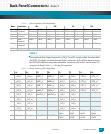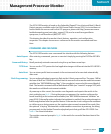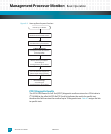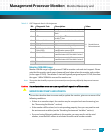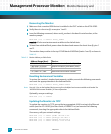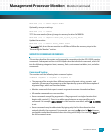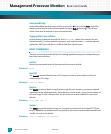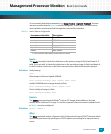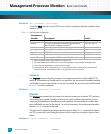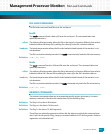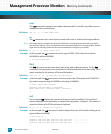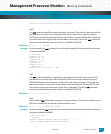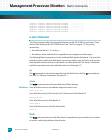
Management Processor Monitor: Monitor Command
10009109-01 ATCA-9305 User’s Manual
9-7
ATCA-9305 (1.0) => setenv ethport eTSEC1
Optionally, save your settings:
ATCA-9305 (1.0) => saveenv
TFTP the new monitor (binary) image to memory location 0x100000:
ATCA-9305 (1.0) => tftpboot 100000 path_to_file_on_tftp_server
Update the monitor:
ATCA-9305 (1.0) => moninit serial_number 100000
If moninit( ) fails, burn the new monitor to a ROM and follow the recovery steps in the
“Recovering the Monitor” section.
MONITOR COMMAND REFERENCE
This section describes the syntax and typographic conventions for the ATCA-9305 monitor
commands. Subsequent sections in this chapter describe individual commands, which fall
into the following categories: boot, memory, flash, environment variables, test, and other
commands.
Command Syntax
The monitor uses the following basic command syntax:
<Command> <argument 1> <argument 2> <argument 3>
• The command line accepts three different argument formats: string, numeric, and
symbolic. All command arguments must be separated by spaces with the exception of
argument flags, which are described below.
• Monitor commands that expect numeric arguments assume a hexadecimal base.
• All monitor commands are case sensitive.
• Some commands accept flag arguments. A flag argument is a single character that
begins with a period (.). There is no white space between an argument flag and a
command. For example, md.b 80000 is a valid monitor command, while md .b 80000
is not.
• Some commands may be abbreviated by typing only the first few characters that
uniquely identify the command. For example, you can type h instead of help. However,
commands cannot be abbreviated when accessing online help. You must type help and
the full command name.



